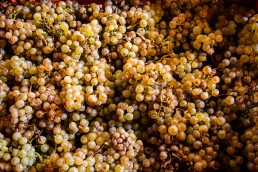Managing Esca disease: 5 years of curetage testing
Winegrowers aiming for high quality goals want to maintain optimal vineyard health for as long as possible, which is why the Esca disease is a concern. In recent years, wood diseases have become more persistent, both in Italy and abroad, and as a result, the work of wine growers has become increasingly difficult. This situation has led us to engage in the search for effective solutions to the problem. For six years now, we have been testing different techniques to try to control, or better manage, this phytopathy. In 2010, we got to know Fraçois Dal, a technician working for Sicavac in Sancerre, in the Loire Valley, who shared with us a series of experiences, observations and figures regarding the treatment of Esca disease using the technique he calls curetage.
The procedure involves diligent cleaning of the wood using a small chainsaw, paying particular attention to the complete removal of the decay that has formed inside the trunk, so as to restore the vine.
We first tested the operation on a small number of vines, and then tested the procedure using a scientific protocol in the vineyard. In Italy, to date, no experimental curetage work has been carried out and no scientifically supported numbers have been released. Therefore, starting in 2013, we have set up experimental trials that are still ongoing. Here we share the results of the first five years of observations.
The ultimate goal of curetage is to minimize the number of diseased plants to be replaced, as the young rooted cuttings have to grow together with the adult vines, a condition that hardly leads to uniformity of grape production and quality in the vineyard.
In the October 2018 issue of the magazine VVQ Vigne Vini & Qualità we presented the results of the 5-year trial we were engaged in with the aim of finding the best way to manage the Esca disease and especially to prevent it.


